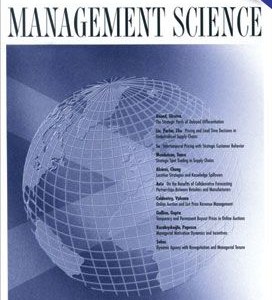
\van Bilsen\, S., Laeven, R. and Nijman, T. (2020). Consumption and Portfolio Choice under Loss Aversion and Endogenous Updating of the Reference Level Management Science, 66(9):3927–3955.
-
Affiliated author
-
Publication year2020
-
JournalManagement Science
We explicitly derive and explore the optimal consumption and portfolio policies of a loss-averse individual who endogenously updates his or her reference level over time. We find that the individual protects current consumption by delaying painful reductions in consumption after a drop in wealth, and increasingly so with higher degrees of endogeneity. The incentive to protect current consumption is stronger with a medium wealth level than with a high or low wealth level. Furthermore, this individual adopts a conservative investment strategy in normal states and typically a more aggressive strategy in good and bad states. Endogeneity of the reference level increases overall risk-taking and generates an incentive to reduce risk exposure with age even without human capital. The welfare loss that this individual would suffer under the conventional constant relative risk aversion (CRRA) consumption and portfolio policies easily exceeds 10%.